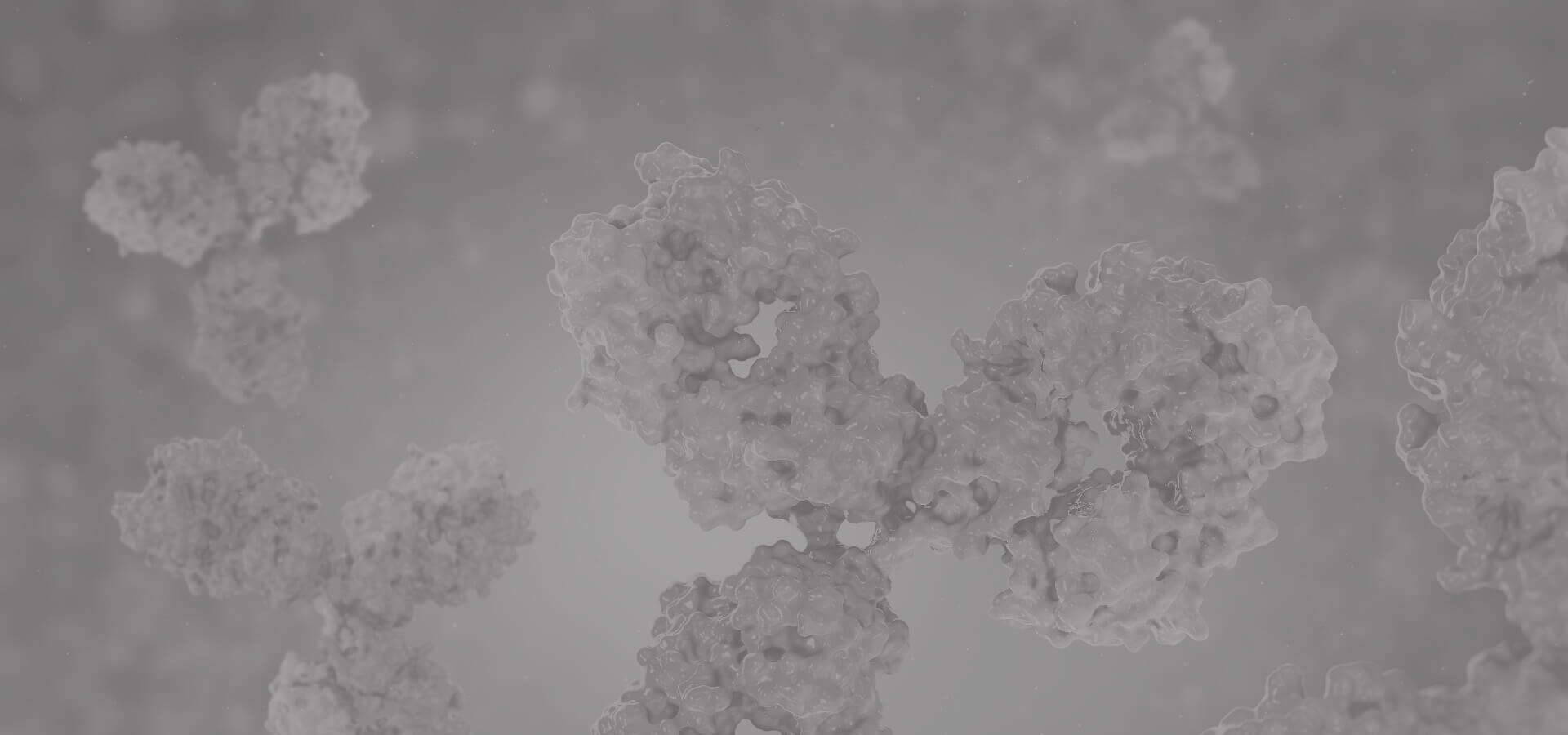LIMK1
There are approximately 40 known eukaryotic LIM proteins, so named for the LIM domains they contain. LIM domains are highly conserved cysteine-rich structures containing 2 zinc fingers. Although zinc fingers usually function by binding to DNA or RNA, the LIM motif probably mediates protein-protein interactions. LIM kinase-1 and LIM kinase-2 belong to a small subfamily with a unique combination of 2 N-terminal LIM motifs and a C-terminal protein kinase domain. LIMK1 is a serine/threonine kinase that regulates actin polymerization via phosphorylation and inactivation of the actin binding factor cofilin. This protein is ubiquitously expressed during development and plays a role in many cellular processes associated with cytoskeletal structure. This protein also stimulates axon growth and may play a role in brain development. LIMK1 hemizygosity is implicated in the impaired visuospatial constructive cognition of Williams syndrome. Alternative splicing results in multiple transcript variants encoding distinct isoforms.
Full Name
LIMK1
Function
Serine/threonine-protein kinase that plays an essential role in the regulation of actin filament dynamics. Acts downstream of several Rho family GTPase signal transduction pathways (PubMed:10436159, PubMed:11832213, PubMed:12807904, PubMed:15660133, PubMed:16230460, PubMed:18028908, PubMed:22328514, PubMed:23633677).
Activated by upstream kinases including ROCK1, PAK1 and PAK4, which phosphorylate LIMK1 on a threonine residue located in its activation loop (PubMed:10436159).
LIMK1 subsequently phosphorylates and inactivates the actin binding/depolymerizing factors cofilin-1/CFL1, cofilin-2/CFL2 and destrin/DSTN, thereby preventing the cleavage of filamentous actin (F-actin), and stabilizing the actin cytoskeleton (PubMed:11832213, PubMed:15660133, PubMed:16230460, PubMed:23633677).
In this way LIMK1 regulates several actin-dependent biological processes including cell motility, cell cycle progression, and differentiation (PubMed:11832213, PubMed:15660133, PubMed:16230460, PubMed:23633677).
Phosphorylates TPPP on serine residues, thereby promoting microtubule disassembly (PubMed:18028908).
Stimulates axonal outgrowth and may be involved in brain development (PubMed:18028908).
Isoform 3
Has a dominant negative effect on actin cytoskeletal changes. Required for atypical chemokine receptor ACKR2-induced phosphorylation of cofilin (CFL1).
Activated by upstream kinases including ROCK1, PAK1 and PAK4, which phosphorylate LIMK1 on a threonine residue located in its activation loop (PubMed:10436159).
LIMK1 subsequently phosphorylates and inactivates the actin binding/depolymerizing factors cofilin-1/CFL1, cofilin-2/CFL2 and destrin/DSTN, thereby preventing the cleavage of filamentous actin (F-actin), and stabilizing the actin cytoskeleton (PubMed:11832213, PubMed:15660133, PubMed:16230460, PubMed:23633677).
In this way LIMK1 regulates several actin-dependent biological processes including cell motility, cell cycle progression, and differentiation (PubMed:11832213, PubMed:15660133, PubMed:16230460, PubMed:23633677).
Phosphorylates TPPP on serine residues, thereby promoting microtubule disassembly (PubMed:18028908).
Stimulates axonal outgrowth and may be involved in brain development (PubMed:18028908).
Isoform 3
Has a dominant negative effect on actin cytoskeletal changes. Required for atypical chemokine receptor ACKR2-induced phosphorylation of cofilin (CFL1).
Biological Process
Actin cytoskeleton organizationManual Assertion Based On ExperimentIBA:GO_Central
Fc-gamma receptor signaling pathway involved in phagocytosisTAS:Reactome
Negative regulation of ubiquitin-protein transferase activityManual Assertion Based On ExperimentIDA:BHF-UCL
Nervous system developmentManual Assertion Based On ExperimentTAS:ProtInc
Positive regulation of actin filament bundle assemblyManual Assertion Based On ExperimentIDA:BHF-UCL
Positive regulation of axon extensionISS:UniProtKB
Positive regulation of stress fiber assemblyManual Assertion Based On ExperimentIBA:GO_Central
Protein phosphorylationManual Assertion Based On ExperimentIDA:UniProtKB
Rho protein signal transductionManual Assertion Based On ExperimentTAS:ProtInc
Signal transductionManual Assertion Based On ExperimentTAS:ProtInc
Fc-gamma receptor signaling pathway involved in phagocytosisTAS:Reactome
Negative regulation of ubiquitin-protein transferase activityManual Assertion Based On ExperimentIDA:BHF-UCL
Nervous system developmentManual Assertion Based On ExperimentTAS:ProtInc
Positive regulation of actin filament bundle assemblyManual Assertion Based On ExperimentIDA:BHF-UCL
Positive regulation of axon extensionISS:UniProtKB
Positive regulation of stress fiber assemblyManual Assertion Based On ExperimentIBA:GO_Central
Protein phosphorylationManual Assertion Based On ExperimentIDA:UniProtKB
Rho protein signal transductionManual Assertion Based On ExperimentTAS:ProtInc
Signal transductionManual Assertion Based On ExperimentTAS:ProtInc
Cellular Location
Cytoplasm
Nucleus
Cytoplasm, cytoskeleton
Cell projection, lamellipodium
Predominantly found in the cytoplasm. Localizes in the lamellipodium in a CDC42BPA, CDC42BPB and FAM89B/LRAP25-dependent manner.
Nucleus
Cytoplasm, cytoskeleton
Cell projection, lamellipodium
Predominantly found in the cytoplasm. Localizes in the lamellipodium in a CDC42BPA, CDC42BPB and FAM89B/LRAP25-dependent manner.
Involvement in disease
LIMK1 is located in the Williams-Beuren syndrome (WBS) critical region. WBS results from a hemizygous deletion of several genes on chromosome 7q11.23, thought to arise as a consequence of unequal crossing over between highly homologous low-copy repeat sequences flanking the deleted region.
PTM
Autophosphorylated. Phosphorylated on Thr-508 by ROCK1 and PAK1, resulting in activation. Phosphorylated by PAK4 which increases the ability of LIMK1 to phosphorylate cofilin. Phosphorylated at Ser-323 by MAPKAPK2 during activation of VEGFA-induced signaling, which results in activation of LIMK1 and promotion of actin reorganization, cell migration, and tubule formation of endothelial cells. Dephosphorylated and inactivated by SSH1. Phosphorylated by CDC42BP.
Ubiquitinated. 'Lys-48'-linked polyubiquitination by RNF6 leads to proteasomal degradation through the 26S proteasome, modulating LIMK1 levels in the growth cone and its effect on axonal outgrowth. Also polyubiquitinated by RLIM (By similarity).
Ubiquitinated. 'Lys-48'-linked polyubiquitination by RNF6 leads to proteasomal degradation through the 26S proteasome, modulating LIMK1 levels in the growth cone and its effect on axonal outgrowth. Also polyubiquitinated by RLIM (By similarity).
View more
Anti-LIMK1 antibodies
+ Filters
 Loading...
Loading...
Target: LIMK1
Host: Mouse
Antibody Isotype: IgG
Specificity: Human, Mouse
Clone: CBAb154
Application*: WB
Target: LIMK1
Host: Mouse
Antibody Isotype: IgG2a, κ
Specificity: Human
Clone: 1A8
Application*: WB, E
Target: LIMK1
Host: Mouse
Antibody Isotype: IgG2a, κ
Specificity: Human, Mouse, Rat
Clone: CBYCL-339
Application*: E, P, WB
Target: LIMK1
Host: Mouse
Antibody Isotype: IgG1, κ
Specificity: Mouse
Clone: CBYCL-337
Application*: WB
Target: LIMK1
Host: Mouse
Antibody Isotype: IgG2a, κ
Specificity: Human, Mouse, Rat
Clone: CBYCL-336
Application*: E, WB, P
Target: LIMK1
Host: Mouse
Antibody Isotype: IgG2a
Specificity: Human
Clone: CBYJL-1723
Application*: WB
Target: LIMK1
Host: Mouse
Antibody Isotype: IgG
Specificity: Human, Mouse, Rat
Clone: CBYJL-1722
Application*: WB, IP, IF, E
Target: LIMK1
Host: Mouse
Antibody Isotype: IgG2a
Specificity: Human
Clone: CBYJL-1720
Application*: F, IF, WB
Target: LIMK1
Host: Mouse
Antibody Isotype: IgG2b
Specificity: Human
Clone: 7C3
Application*: F, IF, WB
Target: LIMK1
Host: Mouse
Antibody Isotype: IgG2a
Specificity: Human
Clone: CBYJL-1719
Application*: F, IF, P, WB
Target: LIMK1
Host: Mouse
Antibody Isotype: IgG1
Specificity: Human, Rat, Mouse
Clone: CBYJL-1718
Application*: WB, IF
Target: LIMK1
Host: Mouse
Antibody Isotype: IgG2b
Specificity: Human, Mouse, Rat, Monkey
Clone: 3H6
Application*: WB, F, IH, IC, IF, P
Target: LIMK1
Host: Mouse
Antibody Isotype: IgG2b
Specificity: Human
Clone: 3G3
Application*: IF, P, WB
Target: LIMK1
Host: Mouse
Antibody Isotype: IgG2a
Specificity: Human
Clone: CBYJL-1717
Application*: F, IF, WB
Target: LIMK1
Host: Mouse
Antibody Isotype: IgG2a, κ
Specificity: Human
Clone: 2E9
Application*: P, WB, E
Target: LIMK1
Host: Mouse
Antibody Isotype: IgG2b
Specificity: Human
Clone: CBYJL-1716
Application*: F, IF, P, WB
Target: LIMK1
Host: Mouse
Antibody Isotype: IgG2a, κ
Specificity: Human
Clone: CBYJL-2605
Application*: E, IH, WB
Target: LIMK1
Host: Mouse
Antibody Isotype: IgG2b
Specificity: Human
Clone: CBYJL-1715
Application*: F, IF, WB
Target: LIMK1
Host: Mouse
Antibody Isotype: IgG1, κ
Specificity: Human
Clone: 1B2
Application*: E, WB
Target: LIMK1
Host: Mouse
Antibody Isotype: IgG2a, κ
Specificity: Human
Clone: CBYJL-1714
Application*: E, WB
Target: LIMK1
Host: Mouse
Antibody Isotype: IgG
Specificity: Human
Clone: CBYJL-1713
Application*: E, IH, WB
Target: LIMK1
Host: Mouse
Antibody Isotype: IgG
Specificity: Mouse
Clone: A905
Application*: WB
More Infomation
Hot products 
-
Human Anti-SARS-CoV-2 Spike Recombinant Antibody (CBC05) (CBMAB-CR005LY)

-
Rat Anti-CD300A Recombinant Antibody (172224) (CBMAB-C0423-LY)

-
Mouse Anti-DHFR Recombinant Antibody (D0821) (CBMAB-D0821-YC)

-
Mouse Anti-BAD (Phospho-Ser136) Recombinant Antibody (CBYY-0138) (CBMAB-0139-YY)

-
Mouse Anti-AKR1C3 Recombinant Antibody (V2-12560) (CBMAB-1050-CN)

-
Mouse Anti-BIRC3 Recombinant Antibody (16E63) (CBMAB-C3367-LY)

-
Mouse Anti-AKT1 (Phosphorylated S473) Recombinant Antibody (V2-505430) (PTM-CBMAB-0067LY)

-
Mouse Anti-CHRNA9 Recombinant Antibody (8E4) (CBMAB-C9161-LY)

-
Rabbit Anti-AKT3 Recombinant Antibody (V2-12567) (CBMAB-1057-CN)

-
Mouse Anti-AP4E1 Recombinant Antibody (32) (CBMAB-A2996-YC)

-
Mouse Anti-CARTPT Recombinant Antibody (113612) (CBMAB-C2450-LY)

-
Rabbit Anti-BRCA2 Recombinant Antibody (D9S6V) (CBMAB-CP0017-LY)

-
Rabbit Anti-CBL Recombinant Antibody (D4E10) (CBMAB-CP0149-LY)

-
Mouse Anti-ARSA Recombinant Antibody (CBYC-A799) (CBMAB-A3679-YC)

-
Mouse Anti-CD33 Recombinant Antibody (6C5/2) (CBMAB-C8126-LY)

-
Mouse Anti-ATP1B1 Recombinant Antibody (E4) (CBMAB-0463-LY)

-
Human Anti-SARS-CoV-2 Spike Recombinant Antibody (CR3022) (CBMAB-CR014LY)

-
Mouse Anti-ENO1 Recombinant Antibody (CBYC-A950) (CBMAB-A4388-YC)

-
Mouse Anti-CCNH Recombinant Antibody (CBFYC-1054) (CBMAB-C1111-FY)

-
Mouse Anti-DMD Recombinant Antibody (D1190) (CBMAB-D1190-YC)

For Research Use Only. Not For Clinical Use.
(P): Predicted
* Abbreviations
- AActivation
- AGAgonist
- APApoptosis
- BBlocking
- BABioassay
- BIBioimaging
- CImmunohistochemistry-Frozen Sections
- CIChromatin Immunoprecipitation
- CTCytotoxicity
- CSCostimulation
- DDepletion
- DBDot Blot
- EELISA
- ECELISA(Cap)
- EDELISA(Det)
- ESELISpot
- EMElectron Microscopy
- FFlow Cytometry
- FNFunction Assay
- GSGel Supershift
- IInhibition
- IAEnzyme Immunoassay
- ICImmunocytochemistry
- IDImmunodiffusion
- IEImmunoelectrophoresis
- IFImmunofluorescence
- IGImmunochromatography
- IHImmunohistochemistry
- IMImmunomicroscopy
- IOImmunoassay
- IPImmunoprecipitation
- ISIntracellular Staining for Flow Cytometry
- LALuminex Assay
- LFLateral Flow Immunoassay
- MMicroarray
- MCMass Cytometry/CyTOF
- MDMeDIP
- MSElectrophoretic Mobility Shift Assay
- NNeutralization
- PImmunohistologyp-Paraffin Sections
- PAPeptide Array
- PEPeptide ELISA
- PLProximity Ligation Assay
- RRadioimmunoassay
- SStimulation
- SESandwich ELISA
- SHIn situ hybridization
- TCTissue Culture
- WBWestern Blot

Online Inquiry







